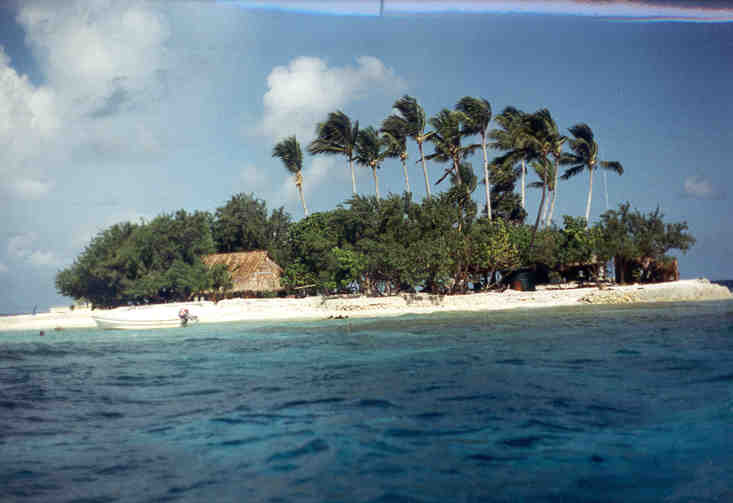
Fanamu Island, Federated States of Micronesia
Click here to go to the main sabbatical web page.
The South Pacific. Images of tropical beaches and hula skirts come to mind when somebody says "South Pacific". Well, those images are true, but the South Pacific is much more than that. For example, there are year-round snowfields on the mountians of Irian Jaya and the city of Singapore is a modern metropolis. The South Pacific is a blend of Asia and Oceana, influenced by Africa and Europe. It's a surprisingly diverse area when you consider how isolated the South Pacific is.

Fanamu Island, Federated States of Micronesia
The South Pacific is a losely-defined place that includes Polynesia, Indonesia, Malaysia and Melanesia. You could even think of Australia and the Philippines as part of the South Pacific. It's somewhere "out there". The area's geography is constantly changing because even though the land masses are fixed, political borders are constantly shifting and place names can change overnight. A prime example would be Irian Jaya. Irian Jaya is the western half of the island of New Guinea, and it shares a border with the country called Papua New Guinea. Irian Jaya was part of the colony known as the Dutch East Indies until WWII and was called Dutch New Guinea. It's now part of Indonesia and has been called "West Papua", "Irian Barat" and "Irian Jaya" over the years. At the start of 2002 the name changed to "Papua", which is easy to confuse with its neighbor, Papua New Guinea. Irian Jaya is fighting for its independance, so the political border might shift soon, as well.
The people in the South Pacific are also very diverse. The indigenous people came from continental Asia and, surprisingly, Africa. The area has been colonized by many European countries, so there are unexpected cultural influences everywhere you look. I went for a walk in Makassar, now known as Ujung Pandang, and passed several mosques, a Buddist temple and many types of Christian churches as I strolled along. The place had been claimed by Portugal until the Dutch took over and built Fort Rotterdam to make their claim permanent, so there are significant European influences, too. It's a port city that trades with its northern, Pacific neighbors, as well as ports along the Indian Ocean, which lies to its south. The city's culture is globally influenced and seems to be quite diverse.
Perhaps the most monolithic culture I encountered was arguably also the most interesting: On Bali. The Balinese have their own language and customs, although they are also unmistakenly Indonesian. The island is 90% Hindu, in contrast to the rest of Indonesia which has a Muslim majority. The Balinese are a gentle, friendly people and their traditions and architecture are facinating. I stayed a week on Bali and devoted a separate webpage to the place.
Click here to go to the Bali webpage, and click here to go to a page on my Jalan Jalan in Irian Jaya. Click here for the Chuuk webpage.